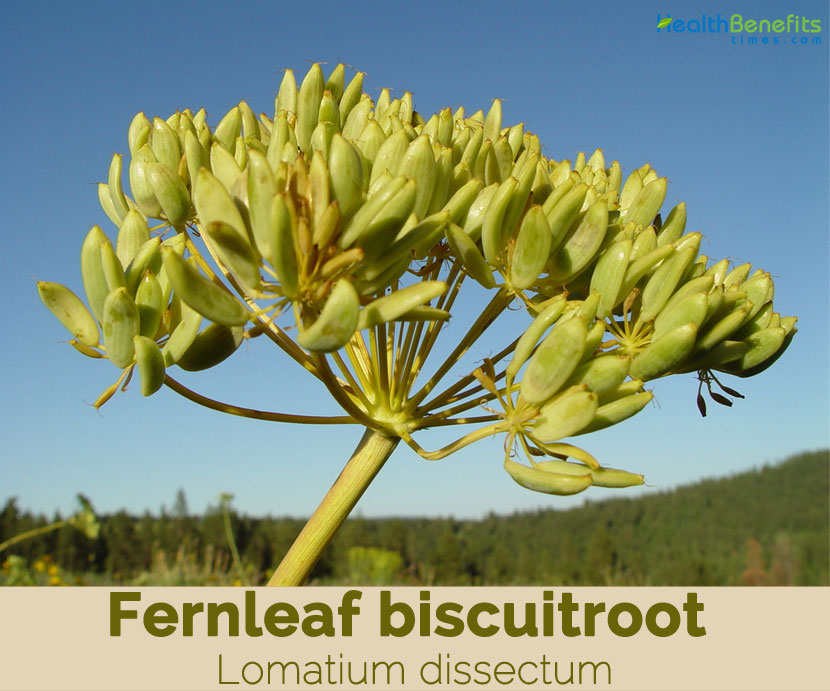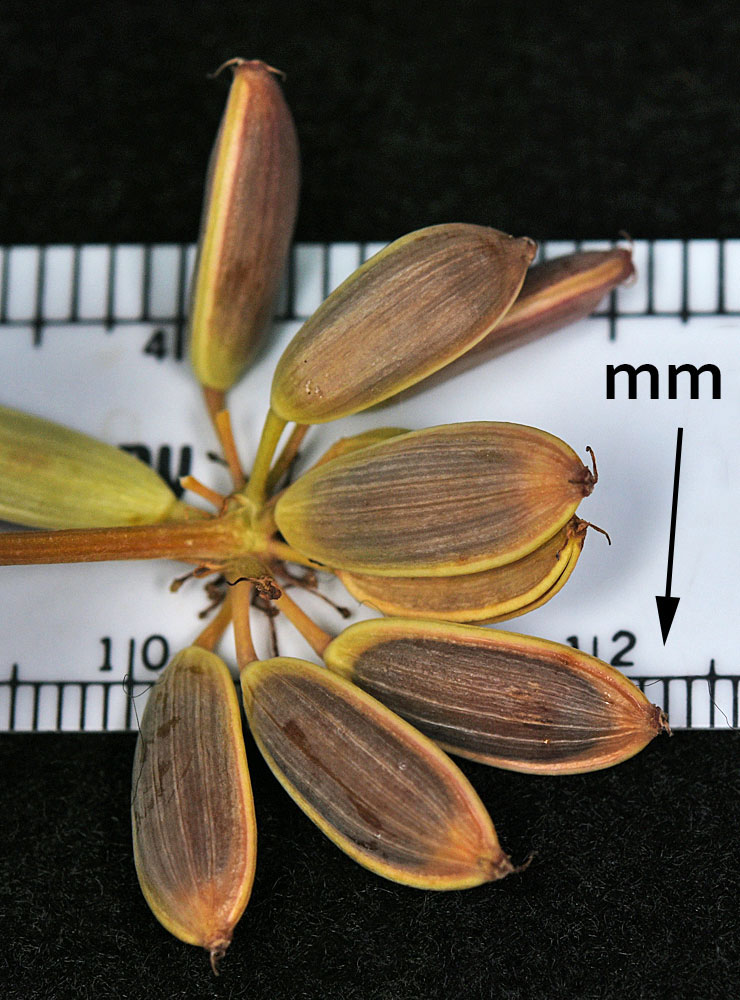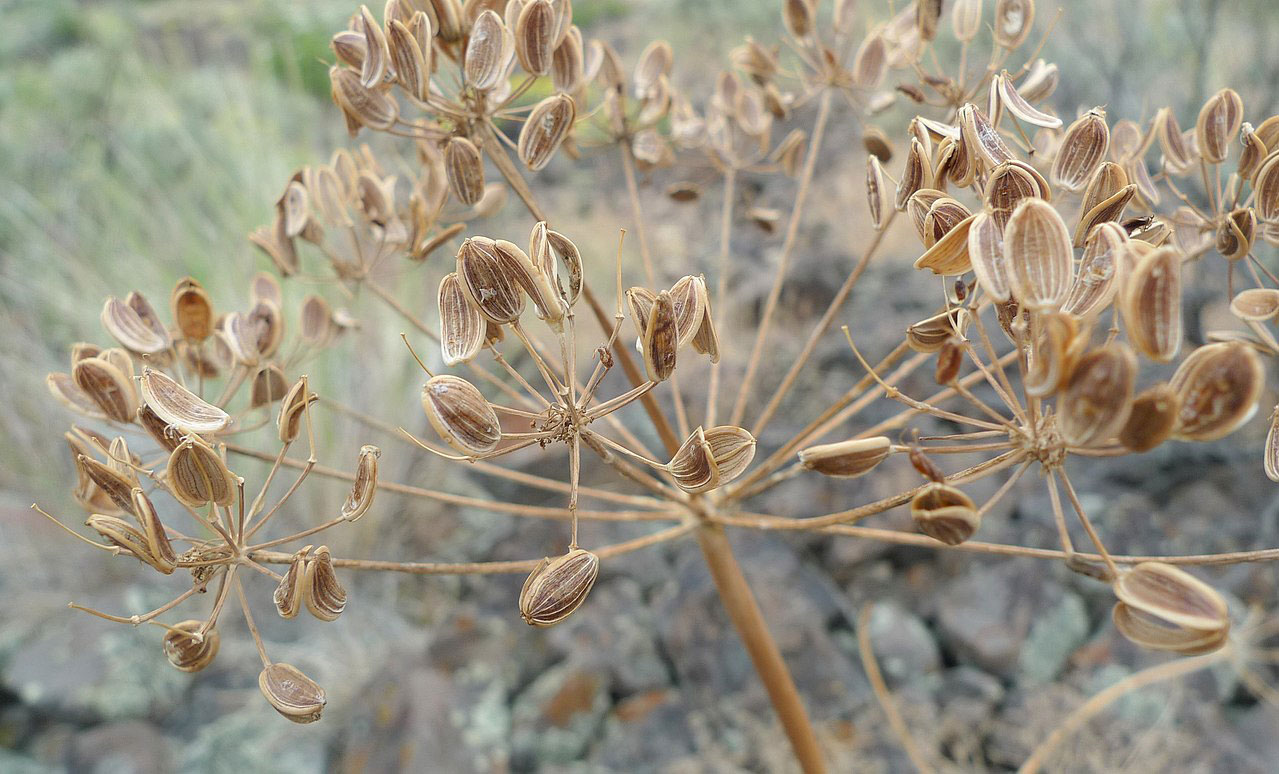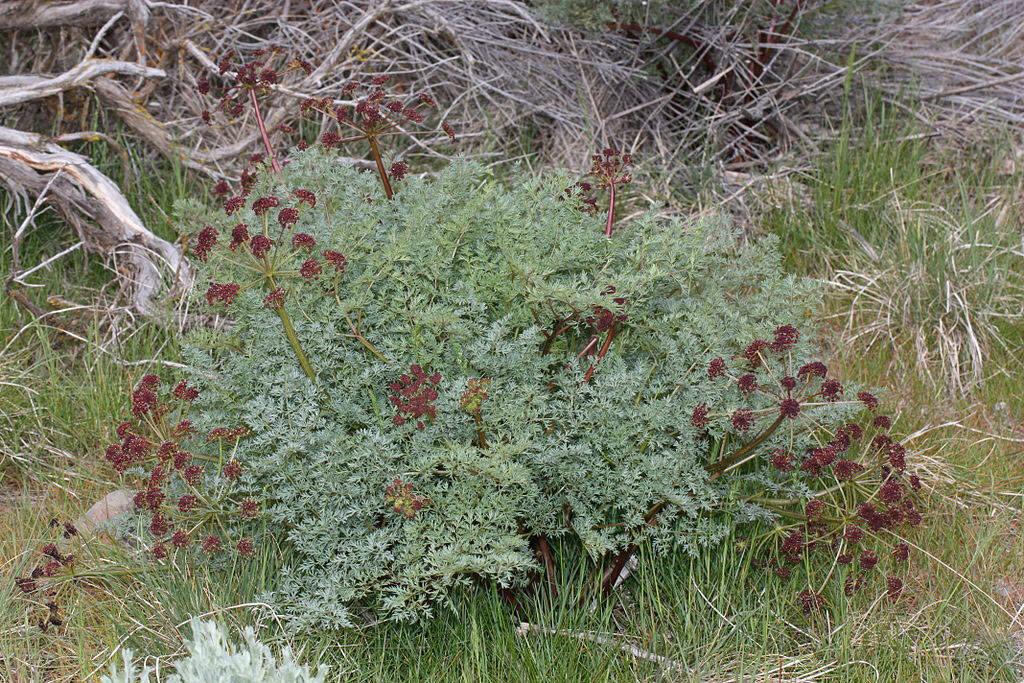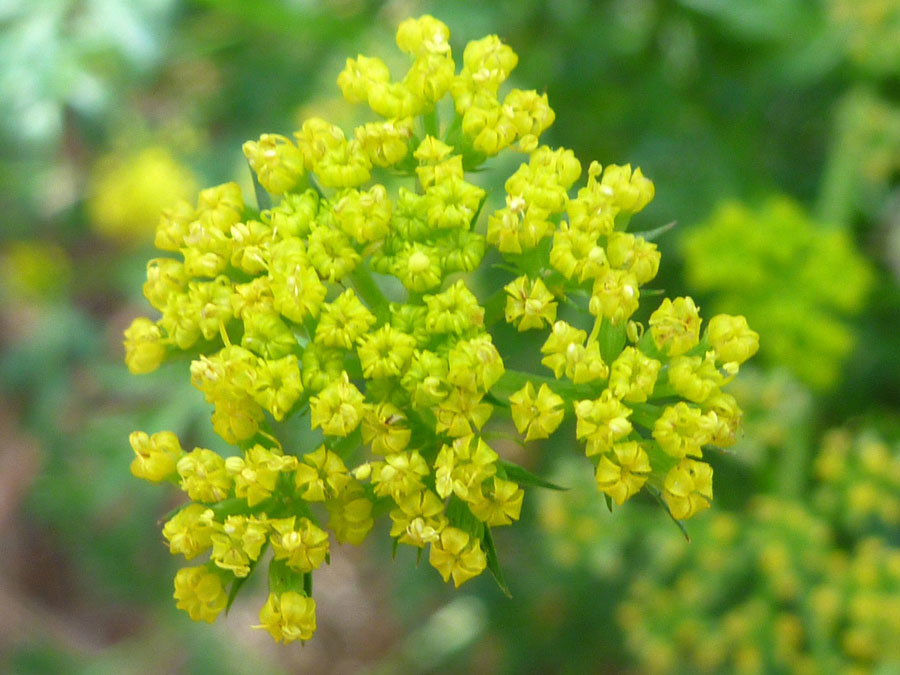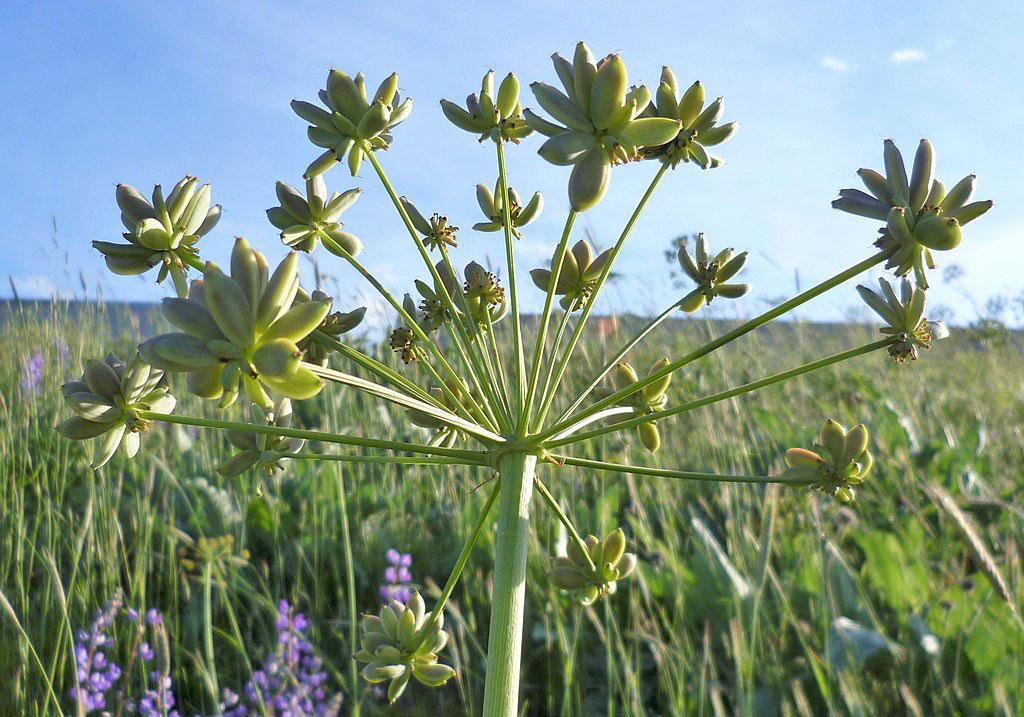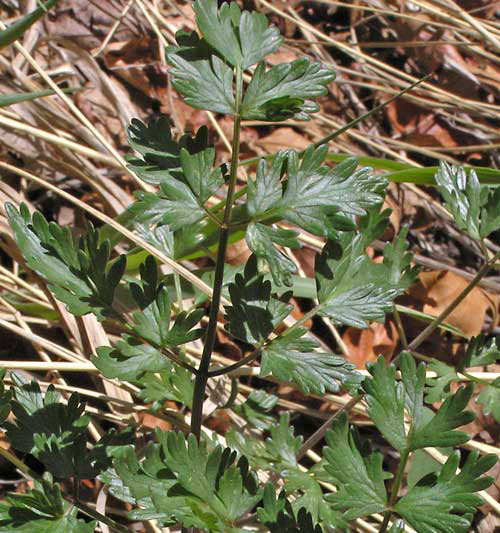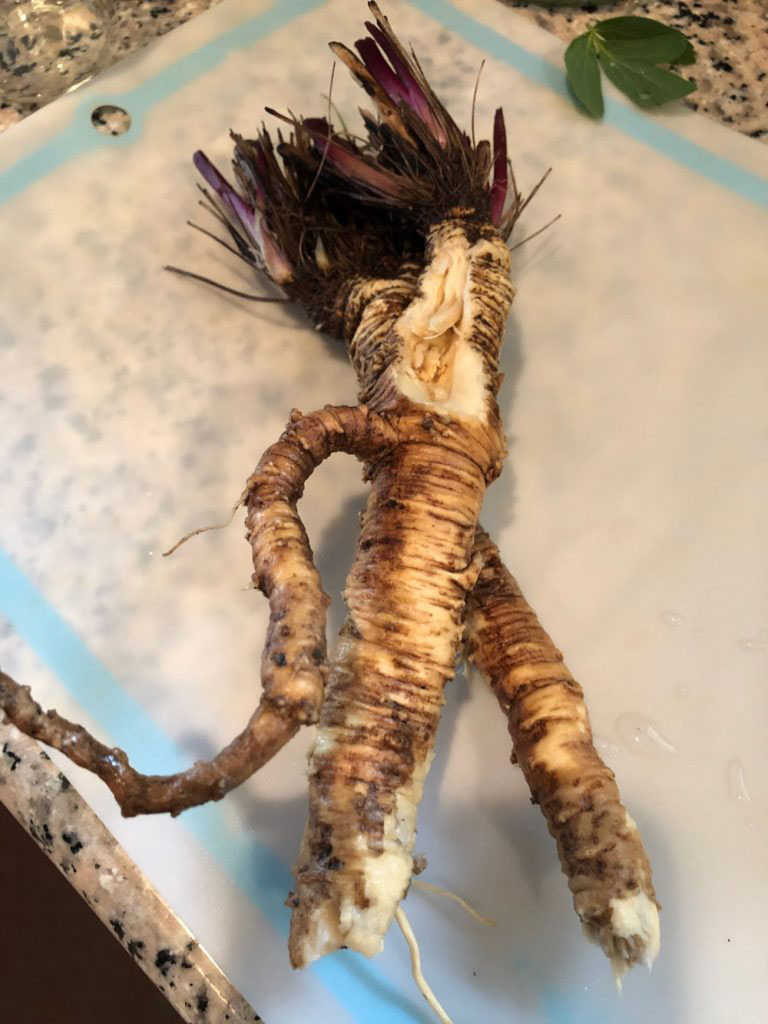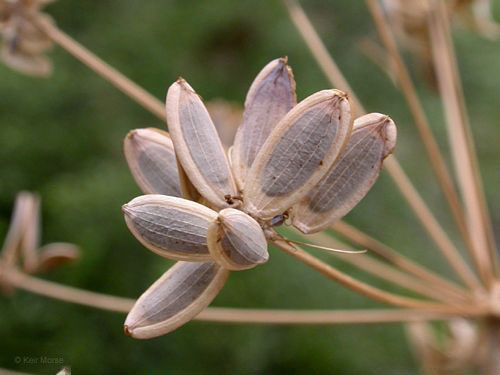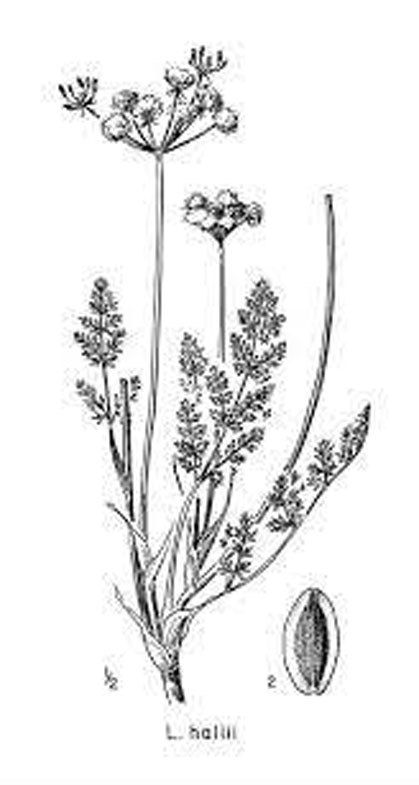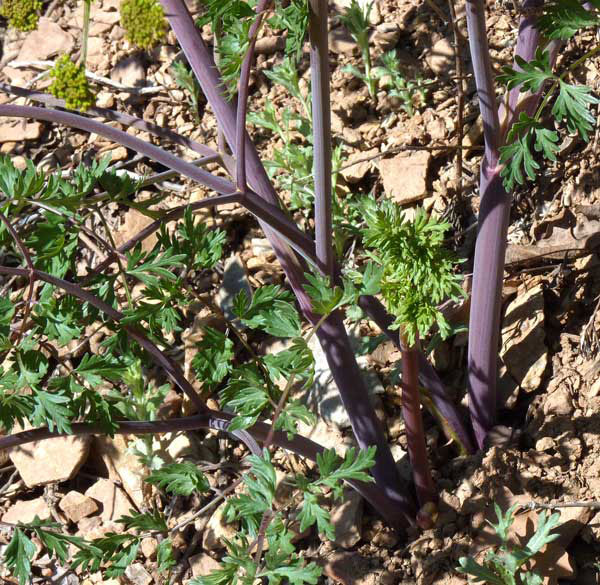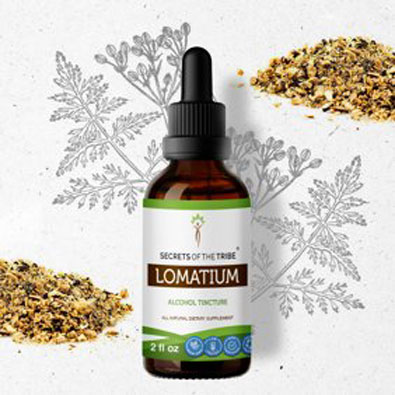There are two varieties of Lomatium dissectum- both of which can be either yellow or purple in color when in bloom, but are distinguished by longer or shorter stalks on the fruit. The Native Americans used this plant as both a food and medicine and scientific studies have shown it to have antiviral and antibacterial properties. The root extracts were shown to inhibit rotavirus, Mycobacterium tuberculosis, and Mycobacterium avium. Lomatium dissectum became widely popular after the influenza pandemic of 1916-1918 when a physician from Nevada reported a complete lack of influenza mortality in a Native American group taking the herb.
Fernleaf Biscuitroot Facts
| Fernleaf biscuitroot Quick Facts | |
|---|---|
| Name: | Fernleaf biscuitroot |
| Scientific Name: | Lomatium dissectum |
| Origin | Much of western North America |
| Shapes | Dry, two-seeded fruits (schizocarps). Schizocarps are flattened dorsally, oblong to oval, 0.4 to 0.6 inch (1-1.6 cm) long, 0.2 to 0.4 inch (0.4-1 cm) wide |
| Taste | Pungent |
| Health benefits | Beneficial for rheumatism, stomach complaints, coughs, colds, hay fever, bronchitis, influenza, pneumonia, tuberculosis, open cuts, sores, boils, bruises and trachoma |
| Name | Fernleaf biscuitroot |
|---|---|
| Scientific Name | Lomatium dissectum |
| Native | Much of western North America. It is found in the eastern slopes of the Cascade Range, Rocky Mountains, Klamath Mountains, eastern Transverse Ranges and the Sierra Nevada in California |
| Common Names | Desert parsley, Ferula dissolute, Giant lomatium, Giant parsley, Indian parsley, Leptotaenia dissecta, Toza, Wild carrot, Fernleaf biscuitroot, carrotleaf biscuitroot, chocolate tips, fernleaf desert-parsley, lace-leaved leptotaenia, Giant Biscuitroot, Giant Desertparsley, Cough Root |
| Name in Other Languages | English: Fernleaf biscuitroot, Lomatium, Fern-leaved desert-parsley, Chocolate-tips, Coughroot, Fern-leaved biscuitroot, Carrotleaf biscuitroot French: Lomatium à feuilles découpées |
| Plant Growth Habit | Long-lived, sturdy, slow growing, tap-rooted, semi-arid perennial herbaceous forb |
| Growing Climates | Open, often rocky slopes, dry meadows, often on talus, rocky outcrops, riparian habitats, grasslands, mountain meadows, sagebrush, steppe, desert shrub lands, woodlands, forests, meadow steppe, mountain meadow vegetation, thickets and valleys to lower subalpine |
| Soil | Grows in a variety of soil types, including rocky to fine-textured and acidic to alkaline soils. it is most common in well-drained, dry, rocky soils particularly those on talus slopes |
| Plant Size | Up to 1.3 m (51 in) tall |
| Root | Root is a large, sometimes branching, taproot reaching approximately 30 cm (1 ft) long and 5 cm (2 in) thick. |
| Stem | Stems are ascending and hollow |
| Leaf | Leaves are ternate and pinnately compound. Blades of the larger mature leaves are 15 to 30 cm (6 to 12 in) long and the larger ultimate segments are 2 to 3 mm (0.08 to 0.12 in) wide |
| Flowering season | April through May |
| Flower | Flowers are yellow to purple, and born in umbels with 10 to 30 rays; each ray is 4 to 10 cm (1.6 to 3.9 in) long. Each umbel is composed of a combination of 50 to 200 male and hermaphroditic flowers |
| Fruit Shape & Size | Dry, two-seeded fruits (schizocarps). Schizocarps are flattened dorsally, oblong to oval, 0.4 to 0.6 inch (1-1.6 cm) long, 0.2 to 0.4 inch (0.4-1 cm) wide |
| Propagation | By Seed |
| Taste | Pungent |
| Plant Parts Used | Root, seed |
| Precautions |
|
Plant Description
Fernleaf biscuitroot is a long-lived, sturdy, slow growing, tap-rooted, semi-arid perennial herbaceous forb that normally grows up to 1.3 m (51 in) tall. The plant is found growing in open, often rocky slopes, dry meadows, often on talus, rocky outcrops, riparian habitats, grasslands, mountain meadows, sagebrush, steppe, desert shrub lands, woodlands, forests, meadow steppe, mountain meadow vegetation, thickets and valleys to lower subalpine. The plant grows in a variety of soil types, including rocky to fine-textured and acidic to alkaline soils. It is most common in well-drained, dry; rocky soils particularly those on talus slopes. Root is a large, sometimes branching, taproot reaching approximately 30 cm (1 ft.) long and 5 cm (2 in) thick. Stems are ascending and hollow. Herbage is aromatic and glabrous to puberulent or minutely scabrous.
Leaves
The plant produces both basal and stem leaves, but stem leaves are less common and much smaller than basal leaves. Leaves are often somewhat rough-textured or scabrous. Leaves are pinnately or ternate-pinnately dissected into fern-like leaflets. Large mature leaves are 4 to 12 inches (10-30 cm) long with petioles up to 12 inches (30 cm) long. Terminal leaflets are 0.1-0.3 inch (2-7.5 mm) long. Petioles are lacking on stem leaves. The leaves appear very similar to those you would find on parsley grown in a garden.
Flower
Flowers are produced in large compound umbels. Peduncles (6-24 in [15-60 cm]) support umbels that are usually solitary. Umbels produce 10 to 30 rays that vary in length from 1 to 5 inches (3-13 cm) long and are topped by umbellets. Compound umbels are comprised of a combination of 50 to 200 male and bisexual flowers. All flowers are small, lack sepals, have five stamens, and five greenish yellow, yellow, or purple petals. Male flowers lack pistils and are common on the central, shorter rays. The flowers are pollinated by insects. Flowering normally takes place in between April through May.
Fruits
Bisexual flowers produce dry, two-seeded fruits (schizocarps). Schizocarps are flattened dorsally, oblong to oval, 0.4 to 0.6 inch (1-1.6 cm) long, 0.2 to 0.4 inch (0.4-1 cm) wide, and have flat-winged edges. Schizocarps include two mericarps (seeds) that remain attached along their midlines until ripe. A single umbel can produce hundreds of seeds.
Traditional uses and benefits of Fernleaf biscuitroot
- Fernleaf biscuitroot was widely used medicinally by many native North American Indian tribes who considered it to be a universal panacea and used it especially in treating chest problems and skin complaints.
- It is little used in modern herbalism, but probably warrants investigation.
- The whole plant, but especially the root, is disinfectant, pectoral, salve, stomachic and tonic.
- Dried root was used in the treatment of rheumatism, stomach complaints, coughs, colds, hay fever, bronchitis, influenza, pneumonia and tuberculosis.
- Root was burnt and the smoke inhaled in the treatment of asthma and other chest complaints, it was also used as a herbal steam bath for treating chest complaints.
- Root was used to make a drink that was taken as a tonic to help people in a weakened condition gain weight.
- Poultice of the peeled and crushed roots has been applied to open cuts, sores, boils, bruises and rheumatic joints.
- Root has been soaked in water and then used as an antidandruff wash for the hair.
- An infusion of the leaves and stems has been used as a tonic.
- Root oil has been applied as a salve to sores and also used as an eye wash in the treatment of trachoma.
- Fernleaf biscuitroot was commonly used by Native Americans for a wide variety of ailments.
- Fernleaf biscuitroot is still popular as a natural herbal medicine, and has been shown to possess antiviral and antibiotic properties.
- Nevada Indians administered a poultice of ground fernleaf biscuitroot chips for head troubles and sores.
- American Indians used and continue to use the roots of fernleaf biscuitroot to treat various internal and external ailments.
- Fernleaf biscuitroot was used as an inhalant, tea, and poultice to treat respiratory issues, skin ailments, and skin wounds.
- During the influenza pandemic of 1917, it was used with reportedly good results, especially in the southwestern US.
- Mash root was used to treat cuts, wounds, and sore muscles.
- Shoshone people collected oil that oozed from cut roots to treat trachoma.
- The Northern Paiute of western Nevada boiled fernleaf biscuitroot roots and rubbed the oily broth on joints for rheumatism, pimples, sores, and aches.
- The Okanogan-Colville made a tea from roots to treat tuberculosis and arthritis, but tea made too strong was poisonous.
- The northern Cheyenne and Blackfoot Indians of Montana used fernleaf biscuitroot tea to ease chest pains and aid people in a weakened condition.
- Colville tribes used roots in a “steam bath” for rheumatism, pains, pneumonia, and other issues.
- The Northern Paiute placed cut pieces of fernleaf biscuitroot roots on a fire and inhaled the fumes to treat colds.
- Blackfoot Indians used to make a hot drink that was taken as a tonic by sick people.
- Internally it was used as an infusion, decoction or smoke to treat respiratory infections such as coughs, colds, sore throats, bronchitis, pneumonia and tuberculosis.
- External applications are beneficial for rashes, cuts, sores, smallpox, wounds, parasitic infections, swellings, sprains and broken bones.
Historical and Contemporary Uses
This plant is one of the most widely used plants in native North American culture used for food, medicine, and ceremonial purposes. The roots were very important food, used in several ways by many tribes. When boiled, they would make a refreshing nutritious drink. Roots would be split, strung, and dried for storage and cooked whenever needed by the Thompson and Okanagon people. The Shuswap, Nlaka’pamux & Lilloet people dug them in May, peeled, steamed and ate fresh or strung them partially dried and stored them for winter use.
In the winter, these dried roots would be soaked for two nights, and then steamed cooked often with yellow avalanche lily bulbs. They were also made into flour which would be mixed with water and flattened into cakes which would be sun-dried or baked. To the Sanpoil tribe, young shoots were a special food eaten mixed with balsamroot and featured in the “first roots” ceremony. The Navajo Indians make an infusion of dried and ground biscuitroot mixed with other plants to give to patients as a part of their Mountain Top Chant ceremony. Additionally, the more mature roots contain compounds from the furanocoumarin group which are toxic and so would be used to aid the catchment of fish by soaking and pounding them which would poison the fish.
Culinary Uses
- Root can be dried and ground into a powder and then be mixed with cereal flours or added as a flavoring to soups etc.
- The roots have been boiled to make a refreshing and nutritious drink.
- Young seed sprouts can be consumed raw.
- Many western Native American tribes used fernleaf biscuitroot as a food source.
- Gosiute Indians, Great Basin Indians, and Montana Indians used tender young shoots as cooked greens.
- Members of the Nez Perce, Okanagon, and Thompson tribes cooked and ate the thick fleshy taproots.
- Seeds were used as food by the Gosiute tribe, and Great Basin Indians made a beverage from boiled roots.
- They were eaten raw, baked, roasted, and dried and made into flour.
- Sanpoil people held a First Roots ceremony that featured fernleaf biscuitroot and arrow leaf balsamroot.
Other Facts
- The pulverized root has been burnt as incense.
- Paiute, Shoshoni and Ute Indians caused their horses to inhale smoke of burning roots to treat distemper.
- Okanagan-Colville and Northern Paiute Indians pounded roots and soaked them in water to poison and catch fish.
- Blackfeet Indians burned smashed root as incense.
- There are approximately 99,000 seeds per kg (45,000 seeds per lb.).
- Fernleaf biscuitroot is a food source for a variety of wildlife from bears to bees.
- Fernleaf biscuitroot was and continues to be used for food, medicine, and ceremonies by Indigenous people of the western US and southwestern Canada.
- Some American Indian men carried the seed of Lomatium species as a love charm.
- Pulverized root was also burnt as incense by tribes in Utah.
- New white shoots were eaten as a relish alone or with meat and said to have a dill flavor.
- Mature stems and roots were considered poisonous by Okanogan-Colville tribe.
- Ten mature roots in a bucket of water would kill fish in a section of the creek.
- Poisoned fish were safe to eat.
References:
https://www.itis.gov/servlet/SingleRpt/SingleRpt?search_topic=TSN&search_value=503534#null
https://npgsweb.ars-grin.gov/gringlobal/taxon/taxonomydetail?id=102115
https://pfaf.org/user/Plant.aspx?LatinName=Lomatium+dissectum
https://plants.usda.gov/core/profile?symbol=LODI
https://plants.usda.gov/plantguide/pdf/pg_lodi.pdf
https://en.wikipedia.org/wiki/Lomatium_dissectum
https://courses.washington.edu/esrm412/protocols/LODI.pdf
http://www.theplantlist.org/tpl1.1/record/kew-2343818
https://www.phytomed.co.nz/site/phytomed/Lomatium%20Herb%20Profile.pdf


